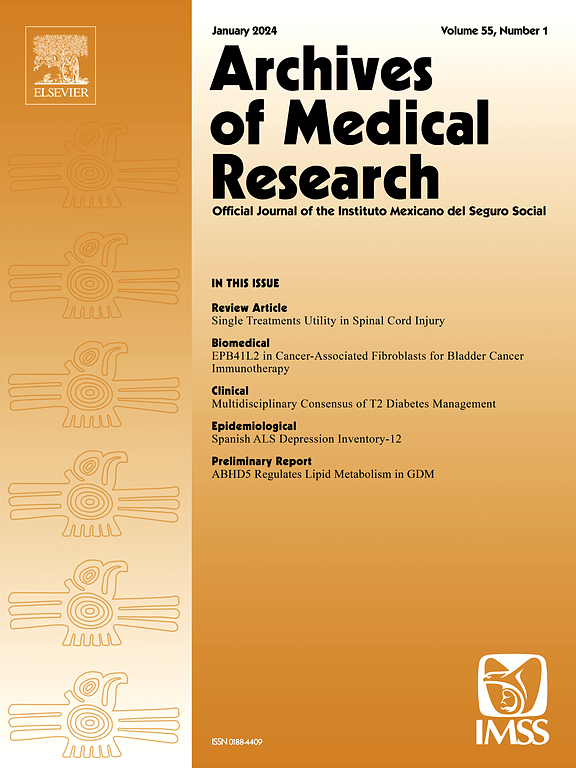Longitudinal Analysis of the Transition Between Multimorbidity and Mortality Patterns from a Syndemic Perspective
IF 4.7
3区 医学
Q1 MEDICINE, RESEARCH & EXPERIMENTAL
引用次数: 0
Abstract
Background
Longitudinal analysis of multimorbidity (MM) from a holistic approach to the aging population is necessary to guide medical care.
Aims
To estimate the probability of transition between different MM patterns and the “death” stage and to characterize the socioeconomic, health, behavioral, and functional dimensions of MM patterns from a syndemic perspective.
Methods
A cohort of 7,120 people ≥50 from the Mexican Health and Aging Study and mortality data at 11 and 17 years of follow-up were analyzed using the latent class approach. MM was defined as the coexistence of two or more chronic diseases (CDs). Socioeconomic, health, behavioral, and functional indicators were registered. Descriptive analysis, latent class analysis, and Markov chain models were carried out.
Results
The model included three latent classes: “healthy” (low probability of CD); “multi-organic” (high probability of hypertension, arthritis, diabetes mellitus, lung disease, and myocardial infarction); and “sensitive-emotional, mental, neurological” (high probability of chronic pain, depression, and cognitive impairment). At the first follow-up, people in the “multi-organic” class were more likely to move on to death, and at the second follow-up, they were in the “sensitive-emotional, mental, neurological” class. In addition, the characteristic profiles of the indicators for each latent class were identified.
Conclusions
The probabilities of transition between the three classes of MM and death, as well as the socioeconomic, behavioral, and functional dimensions in those over 50 years of age, revealed, from a syndemic perspective, the variability in the likelihood of progressing toward an unfavorable outcome.
从综合征角度对多发病与死亡模式转变的纵向分析。
背景:从整体角度对老年人群多病(MM)进行纵向分析是指导医疗护理的必要手段。目的:估计不同MM模式和“死亡”阶段之间转换的概率,并从综合征的角度描述MM模式的社会经济、健康、行为和功能维度。方法:采用潜在分类方法,对来自墨西哥健康与老龄化研究的7120名≥50人的队列和随访11年和17年的死亡率数据进行分析。MM被定义为两种或两种以上慢性疾病(cd)的共存。登记了社会经济、健康、行为和功能指标。进行了描述性分析、潜在类分析和马尔可夫链模型。结果:该模型包括三个潜在类别:“健康”(低概率CD);“多器质性”(高血压、关节炎、糖尿病、肺病、心肌梗死的概率高);以及“敏感-情绪,精神,神经”(慢性疼痛,抑郁和认知障碍的高概率)。在第一次随访中,属于“多器官”类的人更有可能走向死亡,而在第二次随访中,他们属于“敏感-情感,精神,神经”类。此外,还确定了每个潜在类别指标的特征概况。结论:在50岁以上人群中,三种类型MM与死亡之间转换的概率,以及社会经济、行为和功能维度,从综合征的角度揭示了向不利结果发展的可能性的变异性。
本文章由计算机程序翻译,如有差异,请以英文原文为准。
求助全文
约1分钟内获得全文
求助全文
来源期刊

Archives of Medical Research
医学-医学:研究与实验
CiteScore
12.50
自引率
0.00%
发文量
84
审稿时长
28 days
期刊介绍:
Archives of Medical Research serves as a platform for publishing original peer-reviewed medical research, aiming to bridge gaps created by medical specialization. The journal covers three main categories - biomedical, clinical, and epidemiological contributions, along with review articles and preliminary communications. With an international scope, it presents the study of diseases from diverse perspectives, offering the medical community original investigations ranging from molecular biology to clinical epidemiology in a single publication.
 求助内容:
求助内容: 应助结果提醒方式:
应助结果提醒方式:


